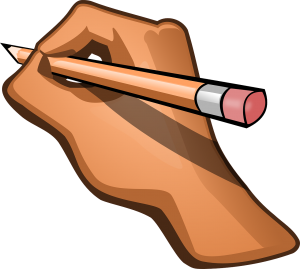-
FYC Goals: From Theory to Application

From Theory to Application . . . The pendulum is swinging, and with each tick of the clock, I find myself getting closer and closer to that first moment of comprehension — the one where I face twenty-six incoming freshman students that are as apprehensive of taking a writing course as I am teaching it for the first time. Did I design my curriculum to best meet the needs of my students? Are my learning outcomes in line with the course objectives? Are my assignment guidelines structured in a format that facilitates both clarity and cohesiveness? Is the sequencing and scaffolding design of the semester’s assignments logically chronological? As Teresa Redd references, “Talkin bout Fire Don’t Boil the Pot” (146). In other words, studying composition pedagogy may prepare me for understanding the needs of students, and may offer direction on how to best design the course, but all of this does not TEACH the students WRITING; hence, this is where the professor’s role comes into play.
After months of trying to absorb as much as I can researching different theoretical pedagogical perspectives, I now begin the process of mapping out assignments while considering the fundamental takeaways I feel are most critical to incorporate. Several takeaways stand out to me in the readings for this week and are highlighted below:

Audience Matters . . . Diversity in Writing. - Diversity in writing – “To develop students’ rhetorical knowledge and sense of authorship so that they can adapt writing to different purposes, audiences, and contexts” (Redd 147).
Coming from an occupational field outside of academia, I genuinely understand the need for students to be able to transfer writing skills from an academic to an applied setting. Learning how to write for audiences outside of the college classroom is something all students should be exposed to. Upon graduation, students may be tasked with various genres of writing: professional emails, corporate marketing, newspaper articles, social media postings, and for some, creative writing.

Writing for knowledge . . . - We write to learn – “ . . . writing enables us to think in ways that are virtually impossible without writing because we can reflect upon our thoughts more easily when we can see and preserve them” (Redd 148).
I have seen this scenario play out daily while working in the KSU writing center. Sometimes, students will come into the writing center and feel overwhelmed by the task at hand. In this situation, after carefully reviewing the professor’s assignment guidelines, I will begin the freewriting and/or brainstorming process. Often times, students will start to develop a structure or pattern based solely upon what they have written in these brainstorming sessions. I associate this process directly with “we write to learn” — we don’t know what we know until we write it. Furthermore, students recognize the fact they DO know something about what they would like to write.

Identifying your process is key . . . - Writing is a process – “We cannot truly teach writing without teaching the process of writing, for it is the development of flexible processes that will enable students to fulfill the wide range of writing tasks they will encounter in the university and beyond” (Redd 149).
As I have previously discussed in one of my recent blog posts, I believe teaching the processes of writing is very paramount in students’ success of not just freshman-level English composition, but I believe it is fundamental in helping students write BEYOND the current assignment. I met with a student just yesterday that has always enjoyed writing and has had great success in writing. For some reason, the current assignment was overwhelming them to the point they had writer’s block. I immediately began talking to the student to try and identify “processes” they had relied upon and typically used throughout the years that had seemed to work. Within a matter of a few moments, the student was writing again, which wasn’t due to anything I said other than encouraging them to draw upon their “processes.”

Genres of Writing . . . - Understanding different genres of writing – “Conventions make it easier for readers to comprehend a text, in large part because conventions fulfill readers’ expectations” (Redd 150).
Not only do students need exposure to writing across different genres for various types of audiences, but they also need to learn and understand the concept of genres and why they exist. For example, the characteristics of a personal email are quite different compared to the audiences’ expectations of a professional email. For one, professional emails typically require the writer to formally introduce themselves, persuade or inform their audience of a specific event/need, and request a call to action. Usually, none of those characteristics mentioned above would need to be included in a personal email. If students haven’t been introduced to various genres of writing, they won’t understand the needs and expectations of writing within those specific spaces.

Multimodality in Writing . . . - Multimodal writing – “To be truly literate, students need to choose appropriate technology for their role, purpose, and audience . . . At the same time, students need to incorporate technology to save time, paper, and energy” (Redd 151).
Multimodal writing is prevalent in today’s society, and I suspect it isn’t disappearing any time soon. If anything, it is here to stay. Understanding the prescriptive guidelines in multimodal writing and expression will help students identify and align with their intended audiences. For example, having students write a research essay on a topic of choice teaches and reinforces field research. Once the essay is completed, professors could have students compose a multimodal assignment (blog post, travel brochure, etc.) incorporating the same research as incorporated into the essay. This type of assignment would aid students in understanding how the same information can be presented in a multimodal and multidimensional environment.
Works Cited
Altmann, Gerd. Pixabay, 2020, pixabay.com/illustrations/tutor-coach-teacher-manager-407361/.
Altmann, Gerd. Pixabay, 2020, pixabay.com/illustrations/puzzle-planning-strategy-process-1686920/.
Altmann, Gerd. Pixabay, 2020, pixabay.com/illustrations/social-social-media-communication-3064515/.
Free-Photos. Pixabay, 2020, pixabay.com/photos/audience-crowd-people-persons-828584/.
Iqbal, Mudassar. Pixabay, 2020, pixabay.com/illustrations/webdesign-design-web-website-3411373/.
OpenClipart-Vectors. Pixabay, 2020, pixabay.com/vectors/hand-pencil-pen-edit-eraser-write-160538/.
Reed, Teresa. “Talkin bout Fire Don’t Boil the Pot: Putting Theory into Practice in a First-Year Writing Course at an HBCU.” First-Year Composition: From Theory to Practice, edited by Coxwell-Teague, Deborah and Ronald F. Lunsford, Parlor Press, 2014, pp. 146-166.
-
The Essence of Writing

Writing Speaks The concept that writing is speaking to situations through recognizable forms is most definitely a multi-faceted concept. As a society, we can only learn and understand information within the limits of language through human communication. Think about that for just a second. Our minds have the ability to dream so much, to analyze, and to understand multi-dimensional structures. We also have the capability of feeling emotions such as love and sadness, as well as other sensory notions that are innately human. But, to express what we are thinking or feeling with someone else requires language; a means of sharing and expressing knowledge with others.
Charles Bazerman, an American university educator, has explained this connection between writing and communication, “Through long practical experience we learn to recognize spontaneously what appears to be going on around us and how it affects us … conscious thought is warranted only if we have reason to believe things are not as they appear to be, if confusions arise within the situation, or if we want to suppress our first impulse and pursue a less obvious strategic path — laughing to appear congenial though we find the joke offensive” (35). In other words, communication is so ingrained in human nature that often times we don’t need to think or analyze our actions in response to verbal cues. However, as our instincts detect a disconnection between what our brain is thinking as our ears are hearing, we then begin to consciously decide our verbal response.
Going further, Bazerman states, “With writing, the need for understanding the rhetorical situation is even greater than in speaking because there are fewer material clues with which to locate ourselves spontaneously” (36). One way the reader can garner these clues that Bazerman references are through the use of genres. Explaining his stance on genres, Bazerman stipulates, “It is through genre that we recognize the kinds of messages a document may contain, the kind of situation it is part of and it might migrate to, the kinds of roles and relations of writers and readers, and the kinds of actions realized in the document.” In layman’s terms, genres could be considered stereotypes to some degree. Through years of communication and experience, readers begin to expect certain formats and criteria found within different types of genre literature. For example, one would expect to find historical facts within the pages of an academic college history textbook and therefore, would be able to process the information within this context. For more information regarding genres, read here.
Another American university educator, Bill Hart-Davidson, further clarifies the concept of genres stating, “ … Genres are habitual responses to recurring socially bounded situations … genre is not something an individual writer does, but rather is the result of a series of socially mediated actions that accumulate over time, genres are only relatively stable” (40). As writers compose literary works, they often adhere to these recognized social constructs as a means of communicating with readers. Over time, slight changes are inevitable, but throughout literary history, many of the classic frameworks still have a prominent place in academic discourse communities.
Mometrix Academy has produced an informative video describing the various literary genres of today; pay special attention to how many of these written works were originally meant to be sung or performed, not just read.
Personally, I find this video to be extremely instructional in regards to the specific types of literary genres found in our culture, and upon viewing, I was able to understand Andrea A. Lunsford’s perspective that, “ … writing is performative … ” (43).
Building upon the concept that writing is a performative act, Lunsford suggests that the performance of writing can go so far as to elicit “spontaneous donations” (44). As I think about the heart-felt stories that have been shared and read on social media sites in forms of Go Fund Me accounts or Caringbridge updates, I begin to truly comprehend the performance dynamics that writing may invoke. I, myself, have made instantaneous monetary donations based upon emotional reactions to various types of written prose. Therefore, I must conclude and as Bazerman mentions, writing most definitely represents the world, events, ideas, and feelings (37), lending to my conclusion that writing is a complex and layered tool of communication.
Works Cited
Altmann, Gerd. Pixabay. 2019, pixabay.com/illustrations/face-faces-dialogue-talk-psyche-3189811/
Bazerman, Charles. “Writing Speaks to Situations Through Recognizable Forms.” Naming What We Know: Threshold Concepts of Writing Studies, Classroom Edition, edited by Adler-Kassner, Linda and Elizabeth Wardle, Utah State University Press, 2016, pp. 35-37.
Caring Bridge. CaringBridge, 2019, www.caringbridge.org/. Accessed 9 Sept. 2019.
Charles Bazerman: The Gevirtz School of Education. The Regents of the University of California, 2014, bazerman.education.ucsb.edu/. Accessed 9 Sept. 2019.
GoFundMe. GoFundMe, 2010-2019, www.gofundme.com/. Accessed 9 Sept. 2019.
Hart-Davidson, Bill. “Genres are Enacted by Writers and Readers.” Naming What We Know: Threshold Concepts of Writing Studies, Classroom Edition, edited by Adler-Kassner, Linda and Elizabeth Wardle, Utah State University Press, 2016, pp. 40.
Literary Devices: Definition and Examples of Literary Terms. Literary Devices, 2019, literarydevices.net/genre/. Accessed 9 Sept. 2019.
Lunsford, Andrea A. “Writing is Performative.” Naming What We Know: Threshold Concepts of Writing Studies, Classroom Edition, edited by Adler-Kassner, Linda and Elizabeth Wardle, Utah State University Press, 2016, pp. 43-44.
Mometrix Academy. “Types of Literary Genre.” YouTube, uploaded 21 May 2018, www.youtube.com/watch?v=fxbDGyLZttA.
William Hart-Davidson: Associate Professor, Associate Dean of Graduate Education (College of Arts and Letters). Michigan State University, wrac.msu.edu/people/faculty/william-hart-davidson/. Accessed 9 Sept. 2019.